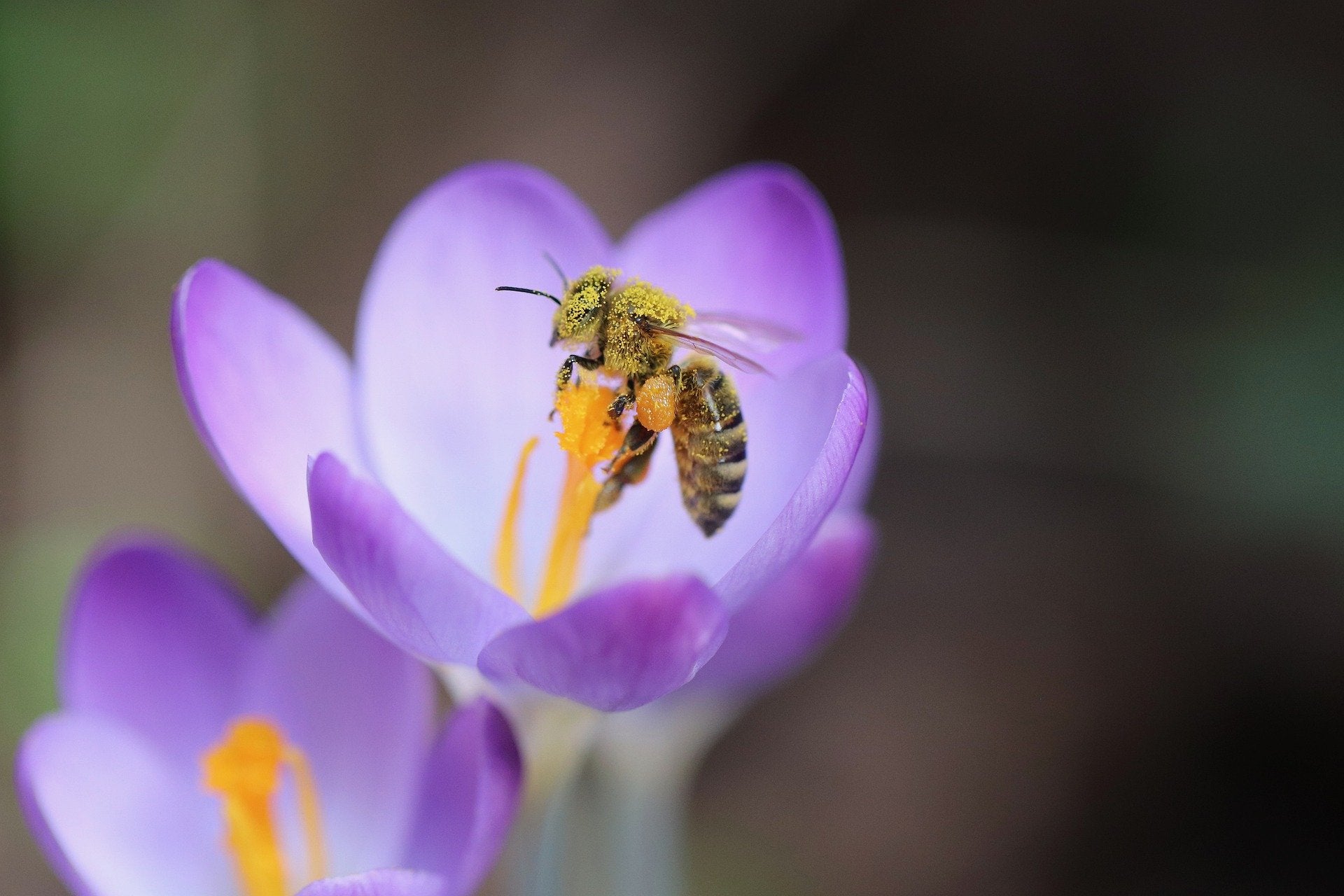Pollinator Attracting Bulbs

Pollinator attracting bulbs will create your wildlife habitat giving you interest in every season. Try these varieties to attract pollinators.
One of the first precursors to signal the new season of Spring are the pollinator attracting bulbs. Their significance to pollinators coming out of hibernation or after migrating is a welcome picnic. The nutrient-rich nectar that pollinator-friendly bulbs hold support and help maintain a sustainable environment. In addition, this ecosystem produces diversity and assists in increasing our food production.
What Attracts Different Pollinators to the Bulb?
Flowers are like beacons on a hill sending out signals for the different pollinators to come. Each has its strategy to magnetize them. For instance, polarized light patterns attract bees. The texture, shape, and temperature of a petal is another beacon to the pollinator. Humidity and an electrostatic charge will help the bee locate the flower. And thus, this electrical charge helps the pollen stick to the bee! Bee's can distinguish flower nectar with a high sugar concentration and attract flower colors such as white, yellow, blue, and ultraviolet.

Butterflies scan for red, yellow, orange, pink, and purple blossoms. Shorter flower tubes and flat-topped varieties are more accessible for the butterflies to extract the nectar.
Moths are night pollinators and are most attracted to flora with a heavy fragrance, white or pale flowers that open at night.
Birds may need strong support for perching as they feed. Brightly colored tubular, funnels, and cup-like flowers hide their nectar and are a perfect dinner plate for a bird's beaks to find. In addition, a non-fragrant flower may attract some birds since they don't have a sense of smell.
The Right Bulb = The Right Pollinator
Every plant needs pollination, and some plants attract specific ones to do the job. Interestingly, each pollinator also has particular needs, so it becomes a symbiotic relationship between them. To provide pollinators with nectar, planting different varieties of pollinator attracting bulbs throughout the seasons can give diversity and keep them in the garden all year. Let's look at the pollinator-friendly bulbs we recommend for this purpose.

Spring
Ornamental Onion (Allium)- Sponsors bees and butterflies
Snake's Head (Fritillaria)- Sponsors birds, flies, wasps, and bee pollinators.
Anemone (Anemone spp. and cvs.)-Sponsors the queen bumblebee and solitary bees
Summer
Lily of the Nile (Agapanthus)-Sponsors bees and hummingbirds
Amaryllis (Hippeastrum)-Sponsors carpenter bees and moths
Canna lily (Canna indica)-Sponsors insects, bats, and hummingbirds
Fall
Naked Lady-(Lycoris squamigera)-Sponsors bees, butterflies, and hummingbirds
Autumn crocus (Colchicum)-Sponsors bees, flies, and wasps
Winter
Snowdrop (Galanthus)-Sponsors bees, and flies, and ants.
Winter aconite (Eranthis)- Sponsors bees and flies.
Tips for Gardening with Bulbs in the Pollinator Garden
You can do things to promote the gathering of pollinators in your garden. Here are a few tips:
- Planting in clumps of several of the same bulb will attract more pollinators to your garden. The accentuation of the flower shape, smell, and color acts as a 'red light' to the pollinator that's most attracted to that particular plant and makes it easier to find.
- A variety of shapes and colors will attract a diversity of pollinators to the garden.
- Avoid chemicals and sprays that can harm pollinators.
Consider a few of these pollinator attracting bulbs to introduce to your garden for each season. Be conscious of adding different colored flowers, shapes and textures to accommodate all the pollinators as they pass through and feed. And when they do, take notes in your garden journal and take pictures to remember the various pollinators welcome to your garden.


